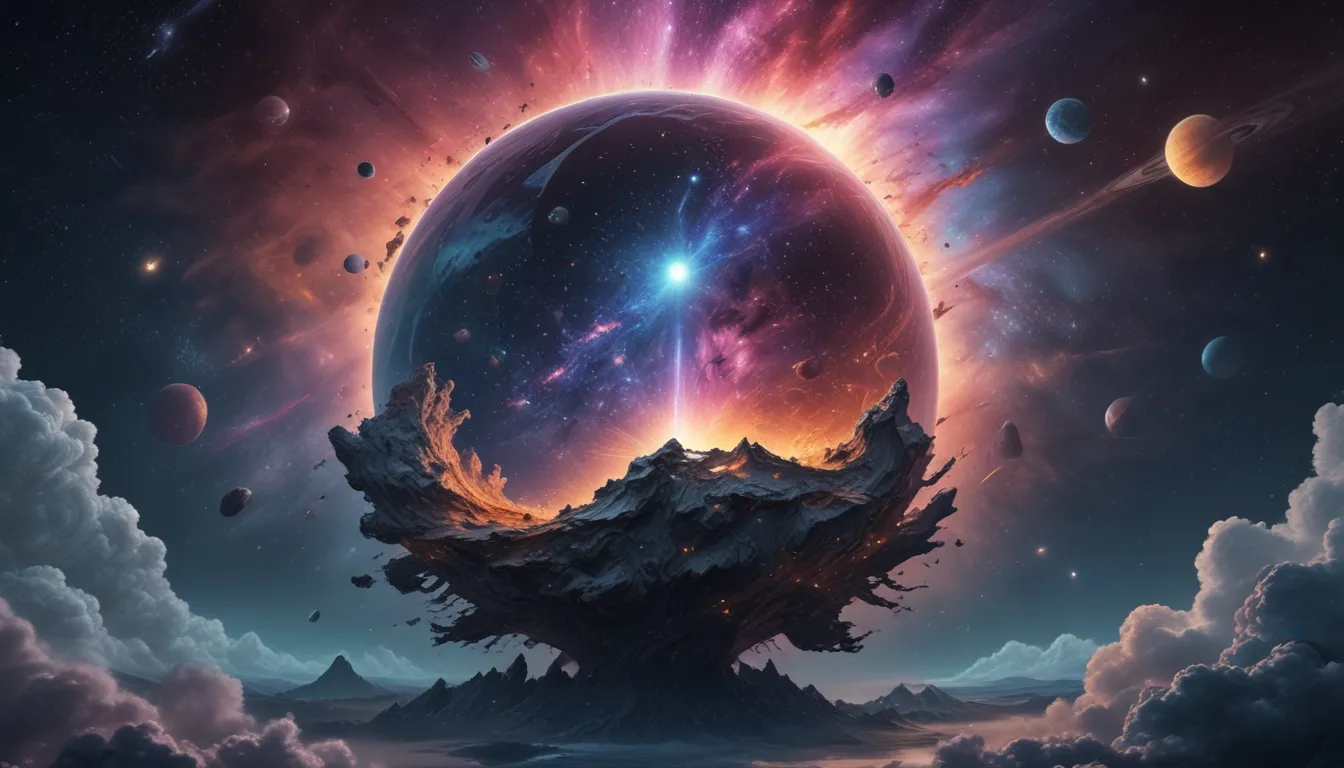The pictures we use in our articles might not show exactly what the words say. We choose these pictures to make you interested in reading more. The pictures work together with the words but don’t take their place. The words still tell you the important facts.
Are you ready to embark on an extraordinary journey through the vastness of the universe? Join us as we delve into the fascinating phenomenon of cosmic reionization, an essential event that shaped the early stages of our universe's evolution. From the mysterious sources of ionizing radiation to the implications for future exploration of the cosmos, prepare to be amazed by the wonders of cosmic reionization.
Exploring Cosmic Reionization: A Transformative Event
Cosmic reionization is a captivating phenomenon that transformed the universe from a dark and opaque state to one filled with light. It played a crucial role in shaping the formation of galaxies and the distribution of matter as we know it today. This process involves the ionization of neutral hydrogen gas by the first light-emitting sources, such as stars and galaxies, marking a pivotal event in the evolution of the universe.
The Epoch of Reionization: Transition to a Luminous Universe
The era of reionization, often referred to as the "Epoch of Reionization," describes the period when the intergalactic medium transitioned from being mostly neutral to being predominantly ionized. This transition from a neutral to an ionized universe marked a significant turning point, heralding the birth of stars and the illumination of the cosmos.
The Role of Ionizing Radiation
During cosmic reionization, young, massive stars were likely the primary sources of ionizing radiation. These stars emitted high-energy photons capable of ionizing the surrounding hydrogen gas, driving the reionization process forward. Additionally, quasars, powered by supermassive black holes, also contributed significantly to the ionization of surrounding gas clouds.
Uncovering the Mysteries of Cosmic Reionization
The exact timeline and duration of cosmic reionization remain active areas of research. Scientists study data from telescopes and simulations to gain a better understanding of how and when reionization occurred. The formation of the first ionized bubbles around the earliest galaxies, along with the patchy nature of the reionization process, adds complexity to our understanding of this transformative event.
The Cosmic Microwave Background Radiation: A Key Insight
Studying variations in the cosmic microwave background provides crucial insight into the epoch of reionization. By analyzing these variations, scientists can deduce information about the properties of the universe during the reionization era, further enhancing our understanding of this critical phase in cosmic evolution.
Implications for Galaxy Formation
The era of reionization marked the beginning of galaxy formation as we know it today. It allowed galaxies to form and evolve, shaping the diverse and intricate cosmic structures observed in the universe. The ionization of the intergalactic medium influenced the way galaxies grew and interacted with each other, highlighting the profound impact of cosmic reionization on cosmic evolution.
Advancing Our Understanding Through Observations and Simulations
Studying cosmic reionization involves utilizing advanced telescopes, simulations, and observational techniques. Instruments like the Hubble Space Telescope and the upcoming James Webb Space Telescope will provide valuable insights into cosmic reionization, enabling scientists to study the early universe in greater detail.
The ongoing Exploration and Research
By exploring various models and simulations, scientists aim to discern the exact mechanisms responsible for driving the reionization process. Whether stars, black holes, or other sources were primarily responsible for the majority of ionizing radiation is a critical question that researchers seek to answer through continued exploration and study.
Future Prospects and Unanswered Questions
The launch of the James Webb Space Telescope and other upcoming observatories will provide unprecedented insights into cosmic reionization. Scientists continue to uncover new facts about cosmic reionization, contributing to our understanding of the universe's origins and evolution. However, many unanswered questions remain, such as the role of dark matter in this process and the precise timeline and duration of cosmic reionization.
Conclusion: A Fascinating Journey Through Cosmic Reionization
In conclusion, cosmic reionization is a fascinating and complex phenomenon that plays a crucial role in the evolution of the universe. Through the exploration of advanced telescopes and observational techniques, scientists have unveiled many intriguing facts about cosmic reionization. This ongoing research offers invaluable insights into the fundamental nature of the cosmos and provides a glimpse into the origins of our existence.
FAQs: Navigating the Wonders of Cosmic Reionization
- Q: What is cosmic reionization?
-
A: Cosmic reionization is the process of ionizing neutral hydrogen atoms, turning them into charged particles in the early universe.
-
Q: How does cosmic reionization occur?
-
A: It occurs when the first galaxies and quasars emit intense radiation, breaking apart neutral hydrogen and creating a plasma of charged particles.
-
Q: Why is cosmic reionization important?
-
A: Cosmic reionization played a vital role in shaping the structure of the universe, allowing galaxies and stars to form and paving the way for the complexity we see today.
-
Q: How do scientists study cosmic reionization?
-
A: Scientists use various observational techniques, including studying the Cosmic Microwave Background radiation and analyzing the light emitted by distant galaxies and quasars.
-
Q: Are there any unanswered questions about cosmic reionization?
- A: Yes, there are still many unanswered questions, such as the exact sources responsible for reionization, the role of dark matter in this process, and the precise timeline and duration of cosmic reionization.
Embark on a captivating exploration of cosmic reionization, unraveling the mysteries of the universe and expanding your knowledge of cosmic evolution. Join us on this cosmic journey as we uncover the secrets of the early universe and gain valuable insights into the processes that have shaped the cosmos throughout its history.






